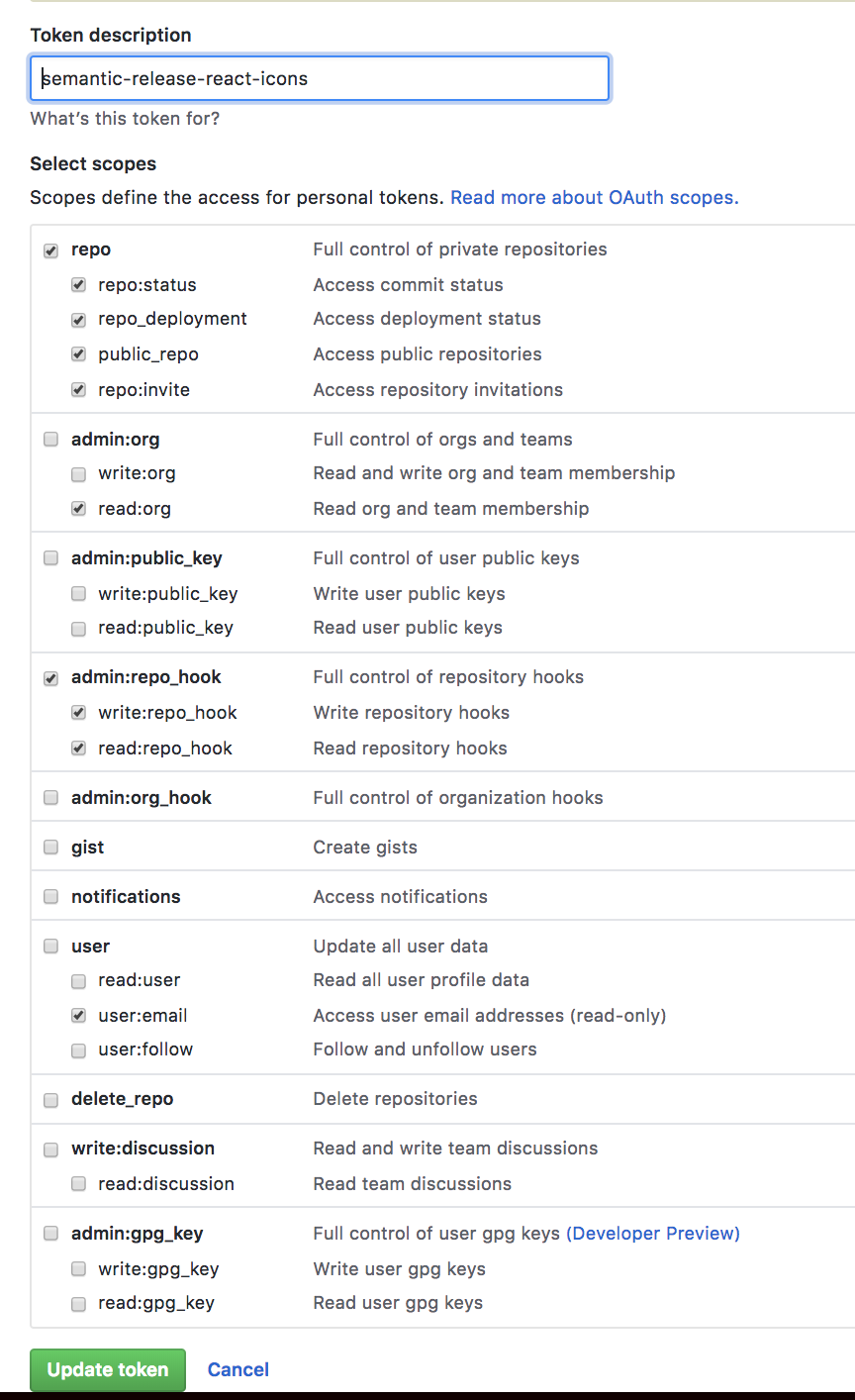Table of Contents
-
yarn add -D @ifit/{conventional-commit,conventional-commit-lint,semantic-release-webview}if using
husky<1.0: migrate to the @next version (yarn add -D husky@next). Here's the upgrade docs -
setup config+scripts in
package.json"scripts": { "commit": "npx @ifit/conventional-commit", "cm": "yarn commit", }, "commitlint": { "extends": [ "@ifit/conventional-commit-lint" ] }, "husky": { "hooks": { "commit-msg": "commitlint -e $GIT_PARAMS" } }, { "release": { "extends": "@ifit/semantic-release-webview" } }
-
update config in
travis.ymlscript: - commitlint-travis # should probably be before your regular linting before_deploy: - npx semantic-release # @ifit/semantic-release-webview is configured to only run on the `test` branch
-
Go to Installation Guide -> Steps: continue from step 2.
-
Install and configure the following packages (check out their ReadMe for details)
-
Setup needed Travis tokens
- create
GITHUB_TOKEN(creation instructions or use the one in 1pass + save it - go to your repo's Travis settings (e.g. https://travis-ci.com/ifit/phoenix-goal-settings/settings)
- create environment config for your
GITHUB_TOKEN
- create
-
Tag current version of your repo with
v#.#.#where#.#.#is the current version BEFORE auto-versioning kicks in
Let the maintainers now about the versioning strategy and the format for commit messages. Here's an example:
### Committing
This repo now makes use of commit linting to have commit messages conform to the [conventional commit standard](https://conventionalcommits.org/). This means that when committing to this repository, the message of the commit must fit the standard or else the commit will not be successful.
The reasons for this are well laid out [here](https://conventionalcommits.org/#why-use-conventional-commits), but we also really like descriptive commit messages to be in our git history. For more information, please follow the links above, or reach out to one of the chapter leads.

### Versioning
Handled automatically by `semantic-release`, based on the commit messages when merged into `test`. More info on [semantic versioning](https://semver.org/).
That version should then be accessible at [https://wolf-dashboard-webview.ifit-test.com/#.#.#/index.html](https://wolf-dashboard-webview.ifit-test.com/#.#.#/index.html). Merges into master will be deployed with the latest version number from test.Here's a visual to include for the commit format

Include:
- How To Test
- Verifications
- Travis settings has a
GITHUB_TOKEN
- Travis settings has a
Steps
- modify a file
- stage it with
git add - do a normal commit
git commit -am "pedro's fake commit" - watch it burn and crash 🔥
- branch off this repo
- remove the commit hooks to lint locally OR do the next steps directly in github
- modify a file
- commit it with an improper message
- wait for the build to fail
Steps
- modify file
- stage it with
git add - try
yarn cm - go through the little CLI
- don't push up the commit
Steps
- run
npx semantic-release --dry-run - note failure with message about it not being the test branch
- move this branch over to local
test - have a valid
GITHUB_TOKEN(akaGH_TOKEN) or create one - run
GH_TOKEN=<copied-token> && npx semantic-release --dry-run - notice success! 🚀
- reset test:
git reset --hard origin/test
-
create a token
